Onsite Wastewater Treatment for an On Point Budget
Comments Off on Onsite Wastewater Treatment for an On Point BudgetThe Challenge
A global manufacturer of key chemical ingredients used in a wide array of products including clothing, carpeting, automobile thermoplastics, computer cases, and sporting equipment, was planning a facility relocation and expansion that presented a significant wastewater treatment challenge.
At their previous location, the manufacturer was using a perozone system to treat their cyanide-laden wastewater. However, the system as designed could not meet the rigorous discharge standards of the local Publicly Operated Treatment Works (POTW) on the order of 0.04 ppm. Further, they had abandoned the peroxide injection system to reduce the health and safety risks per a companywide mandate.
The expansion required a relocation to a new facility, but the increased production would also triple the company’s wastewater volume. If they did not find an onsite treatment solution, the hauling and disposal costs were going to dramatically increase operating expenses.
The Solution
Nailing Down the Requirements
Anguil collaborated with the client to understand their specific challenges and determine the project objectives. We gathered benchmark data at the existing facility to identify possible solutions that offer the best return on investment (ROI). Project engineers then worked with the customer to understand their decision-making criteria to evaluate only business viable treatment approaches.
In this case, the client’s priority was to eliminate hauling and disposal costs of their cyanide-laden wastewater. With the expansion at a new facility, they expected their wastewater volume to triple, as well as the corresponding disposal costs. Secondly, they wanted a fully automated system with minimal operator intervention so they could focus on producing products. Third, they wanted to minimize the storage and handling of any noxious chemicals.
Next, water samples were sent to the Anguil lab to validate the different technology considerations. Anguil typically identifies several potential treatment and process options which align with the client objectives, and after presenting these to the customer, collaboratively selects one or several to validate. Anguil proposed several oxidation schemes. The client preferred to move away from ozone and peroxide so alkaline chlorination was selected for this project. It is a well-known method with wide application to similar waste streams and is easily automated.
To validate the treatment process, the customer elected for both a bench trial as well as a scaled pilot. For the bench work, the client provided 5 gallons of wastewater collected from their existing facility. Using the required caustic and bleach treatment protocol and measuring free HCN content via the USEPA Pyridine Barbituric Acid Method (Method 10265), test samples were returned which were below the POTW limit of 0.04 ppm. Based on the bench tests results, chemical dosing requirements and costs were easily established before the system was even installed.
Bench Verification
Figure 1 – As received waters from the two (2) drums of HCN wastewater marked 1 and 2 respectively. (Right) HCN wastewater post treatment.
Figure 2 – Example HCN measurements. Non-detect is shown on the right, over range on the left.
After the validation that the method would work, albeit on small sample volumes, the customer requested that Anguil perform a larger pilot study to both validate that larger batch treatments would perform similarly. For the pilot work, the client sent Anguil two (2) fifty-five-gallon drums of wastewater. Adapting an existing pilot system, the same reactions were performed at the previously determined set-points on 15- and 25-gallon batches. Again, final concentrations of HCN were below the required discharge limit. In addition to the further treatment efficacy validation, the chemical dosing requirements were used to estimate yearly operational expenses for the full-scale treatment system as well as size and design the required chemical reagent storage capacity.
Figure 3 – Appx 15 gallons of HCN wastewater before treatment (left) and after treatment (right). Again, the cloudiness is due to the formation of the precipitate.
Putting it all Together
The final step in the process is the system design, realization, and installation. Anguil put together the proposal for a fully automated batch treatment system to handle their expected treatment volumes. The proposal contained specifics on many mechanical components including the tank, pumps and mixer sized as well as the advanced automation and controls – including integration with their existing infrastructure and DCS system – to meet their requirements. Additionally, the appropriate service options for installation, installation supervision, commissioning, and training were included. After the system was installed, Anguil performed a 3-day start-up and training including verification of the system’s ability to treat the wastewater. Anguil’s Aftermarket team will be there to service and support the client as needed.
The Result
Anguil’s approach to solving a client’s wastewater problem is to take a wholistic view of the challenge with a series of go/no go steps throughout the process. Project Engineers are always focused on the customer’s business objectives in a collaborative effort to define an efficient and cost-effective trial to validate treatment approaches that align with their objectives. Through the bench and pilot testing, we offer insight gained along with a comparison of pros/cons of the treatment approaches until we get to the treatment system that aligns with the client needs.
As a system integrator with 35+ engineers and 60+ supporting personnel, we take a technology agnostic approach to help our clients get the system they want. In this case, the results from our effort:
- Client walked through a collaborate process to ensure key decision criteria and objectives were met in a timely and cost-effective manner.
- Customer was able to evaluate various oxidation treatment options that aligned with safety and cost parameters.
- Lab and pilot validation trials confirmed treatment approach and provided operational expense estimates to client as requested.
- Anguil provided a single-source system integration approach that included all engineering (Mechanical, Electrical, CAD, Project Engineering) and support services in-house to mitigate exposure to risk and deliver a fully integrated system with install, commissioning, and training support.
- The treatment approach saved the client considerable amount of money versus hauling and disposal services; providing an ROI estimated in the 14-16 month range.
- Anguil’s electrical engineering team developed the automation and controls to automate the batch-treatment process. This results in minimal human interaction and an extremely efficient process. It also proactively notifies them via text and email of system condition, need for chemical reorder, reporting and remote login capabilities.
Note: At the time of bench and pilot testing this wastewater, Anguil was engaged with a second wastewater produced by the client. We followed a similar approach and validated treatment efficacy through lab and pilot studies. The result of onsite treatment for both wastewaters offered the client an incredible cost savings with minimal impact to resources.
Frac Water Reuse Technologies
Comments Off on Frac Water Reuse TechnologiesThe Challenge
The worldwide energy sector has accelerated the development of its unconventional oil and gas resources through increased use of horizontal drilling and hydraulic fracturing practices. Water is an essential element in the fracturing process and the recycling or reuse of spent water can dramatically reduce costs. The volume of water required to fracture a well varies, but it generally ranges from one million gallons to five million gallons. Operators face difficult challenges securing water sources for their operations, especially already dry regions. Furthermore, the management of waste water associated with hydraulic fracturing has an environmental impact and associated cost.
The development of technology to recycle and reuse this water is now becoming critical and Anguil has integrated solutions to help. We have developed an effective water recycling system that allows well operators to safely reuse water without jeopardizing well output.
The Solution
WATER RECYCLE AND REUSE
Water generated during drilling, well completion, and production is categorized either as flowback or produced water. Flowback water is the initial fluid produced after hydraulic fracturing and is typically recovered during the first six weeks of well production. The flowback water characteristics stem from the initial source water, the natural formation brine, fracturing fluid additives, proppants, and drilling fluids. Generally, 20-40% of the fracturing fluid volume is recovered as flowback. Produced water is the water which naturally exists within shale formation and is recovered concurrently with oil and gas. After the initial flowback period, produced water resembles the characteristics of the formation brine. The volume recovery rate of produced water is lower in comparison to the flowback, but occurs over the decades of a well’s lifetime. Currently, the majority of flowback and produced water is disposed of in salt water disposal wells.
Recycling and reuse of flowback and/or produced water reduces fresh water demand and the associated costs of water purchase, transportation, and disposal. In contrast to the usual practice of complete disposal, a portion of the flowback is treated for reuse either onsite or at an adjacent well. The primary economic benefit from recycling is a significant reduction in the number of truck loads required to ship fresh water to the well site and the flowback water offsite. Environmental benefits include reduced reliance on and competition for fresh water sources, a reduced carbon footprint from trucking, and less stress on the local infrastructure.
Treatment requirements for flowback and produced water are normally established by the company performing the well completion. Knowledge of the fracture fluid employed is required when considering the recycling methodology in order to identify the required treatment characteristics. Two common fracturing fluids are slick water and gels. Slickwater is normally used for natural gas production, whereas gels are often deployed for oil field development.
ANGUIL’S FRAC WATER REUSE SYSTEM
Since there is a wide variation in flowback and produced water quality in oil and gas fields, Anguil Aqua Systems is presently focused on the treatment of flowback and/or produced water from natural gas wells.
Previously, the high levels of Total Dissolved Solids (TDS) in produced water were thought to render it unusable. However, well service companies have demonstrated that moderate TDS levels in recycled water do not impact well production capacity. Hence our solution is to focus on the minimization of Total Suspended Solids (TSS) and, overall reduction of bacteria and other contaminants affecting the fracturing fluid additives.
Of the many approaches to the minimization of TSS, the Anguil solution is a ballasted flocculation system. Similar systems have been successfully employed to treat drinking water as well as municipal and industrial waste waters containing many of the same contaminants found in flowback and produced waters.
SYSTEM DESCRIPTION
The diagram below depicts the flow pattern for the clarification process. In the first tank, the raw water or influent is combined with a coagulant, commonly ferrous sulfate, ferric sulfate, ferric chloride, or alum. The coagulated influent then passes into the flocculation tank where a polymer and a ballast material such as microsand, iron oxides, or chemically enhanced sludge is added. Coagulation and sedimentation times are reduced by the addition of chemical additives and the ballast material. After ballast and polymer additions, the flocculated water then proceeds to the third tank where additional mixing occurs, allowing the floc to coalesce into larger precipitates. The matured, flocculated water proceeds to the clarification tank where the floc is separated from the water by passing through plate or tube settlers. Clarified water then exits from the top of the system.
Settled floc and ballast material are collected and pumped to the ballast recovery unit where the ballast is separated from the waste solids. The waste solids are sent to disposal and the recovered ballast is returned to the first flocculation tank. We can provide treatment systems which help improve injection facilities operations and maintenance, reducing injection pressures and minimizing acid jobs by keeping your wells from fouling. Furthermore, our solutions include treatment options to enhance your oil recovery and treat for hydrogen sulfide control.
The Result
As a member of the Gas Processors Suppliers Association, Anguil is heavily invested in industry’s success and future. Countless air pollution control installations at natural gas processing and petroleum refining sites gives us the necessary knowledge to address your water treatment needs safely, effectively and within your demanding production schedules.
- Reuse of Flowback and Produced Water: Physical and chemical treatment system that reduces suspended solids to acceptable reuse standards for hydraulic fracturing.
- Mobile Precipitation: A system easily deployed on site, allowing treatment for multi-well completions, or transport to a nearby well.
- High Contaminant Removal: Total Suspended Solids (TSS), turbidity, oil/grease, color, and bacteria.
- Chemical Coagulation: A wide range of available coagulants and polymers allows customization to site specific needs.
- Automated Chemical Feed System: Treatment begins with proper dosing of chemicals to precipitate dissolved contaminants. The Frac Water Reuse System incorporates chemical metering pumps, day tanks and pH instrumentation to ensure treatment objectives are being achieved.
- Lower Costs: Ballasted clarification allows for smaller equipment footprint, reduced power consumption, and reasonable chemical use. Recovery and reuse of ballast material lowers consumable costs.
- Short Term Lease Agreements: Flexibility to only pay for water recycling system during peak water demand.
- Customized Service and Project Management Contracts: Anguil personnel can be contracted to provide continuous service and/or operation of the entire water recycling system.
Wastewater Compliance Techniques For Food Processors
Comments Off on Wastewater Compliance Techniques For Food ProcessorsThe Challenge
Food production has always been a demanding and competitive process. Executives are constantly challenged by slow product development cycles, competition from healthier alternatives and even food fraud. In today’s climate, producers now worry they can be perceived as environmentally and socially irresponsible, resulting in some retail chains refusing to stock their brands until they make often intensive and expensive changes.
Many producers are being hit by a second blow to their profit margins due to failing and overcapacity Publicly Operated Treatment Works (POTWs). Wastewater previously discharged with little care may now be subject to volume and contaminant surcharges as POTWs repair infrastructure and struggle to meet increased EPA discharge regulations.
Finally, treatment system operators with decades of experience are retiring and their tribal knowledge of how to run their antiquated treatment system retires with them. This leaves owners and executives wondering how to replace that knowledge base and ensure they remain in compliance.
In the face of increased regulatory control and rising environmental concerns about wastewater, food producers are looking for cost-effective ways to stay in compliance while keeping operating costs low. Anguil’s four-step approach to industrial wastewater treatment challenges can help producers address economical, operational and compliance challenges.
The Solution
NAILING DOWN THE REQUIREMENTS
Anguil Environmental provides highly engineered environmental equipment and service solutions that solve complex industrial air and water challenges. When we are aiding companies with water projects, we follow a very simple but effective process to deliver systems tailored to each customer’s specific needs.
The first step is to understand the business case.
We collaborate with the client to understand their challenges, and determine the project needs and objectives. We gather benchmark data to assist with alignment of solutions that offer the best return on investment (ROI), then work with the customer to understand their decision process and criteria to ensure we can check all their boxes. For example, is our customer willing to spend more on controls and automation to minimize operator involvement or to better deploy staff in other areas of the facility?
In this case, a client was looking at TSS surcharge costs of $40,000 per quarter and a surcharge of $20,000 per quarter for acidic discharge waters. The client was essentially looking at $240,000 in increased operating costs per year. BOD did not receive a surcharge, and overall water volume costs were negligible.
The second step is to explore and validate all treatment and operational processes in the Anguil lab.
Anguil validates all potential treatment and process options that align with the customer objectives. A client wanted to determine a solution for TSS removal below discharge requirements. We started by asking the client to send a wastewater sample to our inhouse wet lab to validate potential treatment protocols. We determined pH / polymer protocol resulted in TSS removals well below the discharge requirements. Hence, we determined a simple scheme could meet the customer’s goals.
After bench-testing provided us with a viable treatment option, we generated a simple Process Flow Diagram (PFD) to illustrate the primary equipment integrated into the treatment train. This train included the appropriate equalization and buffer tanks, pump logistics, clarifier, and a filter press for solids handling. In our discussion with the client, we offered additional options including:
- Ballasted flocculation versus straight clarification to lessen the overall footprint
- A rotary vacuum drum for dewatering instead of a filter press to lessen the burden on facility personnel and lower the liquid content (weight) of solids being shipped off site
Even though the customer appreciated the pros of each option, after reviewing the capital cost increase, the client decided to remain with the original approach.
The third step is a pilot system onsite to test waters in-situ:
With the client satisfied with our lab trials, we asked if they required a pilot system to validate the treatment approach insitu. When asked for our opinion on the value added, we stated we were confident with the treatment approach and market proven technologies. In this case a pilot study would not bring a great deal of value.
PUTTING IT ALL TOGETHER
The final step in the process is the Commercial Deployment.
After completion of lab testing, discussion of various equipment options and testing against the business case, Anguil provided a firm proposal for a treatment system which would meet the treatment efficacy and business needs of the customer. The proposal contained detailed nuts and bolts information on the treatment system, estimated operational costs and options for installation, start-up and commissioning. The flexible approach allowed the customer to choose the package that best suited their needs. Anguil provided installation supervision while their local mechanical and electrical partners were contracted directly by the customer to install the equipment. Anguil performed a 3-day start-up and training. Anguil provided final “as-built” drawings within 2-weeks of startup and shipped spare parts the client requested. Additionally, Anguil’s Aftermarket and Service group was proactively in touch, ready to provide long term system and parts support.
The Result
Anguil followed a better approach to solving complex water challenges, which started with listening to the client’s needs and business case. Anguil advocated an efficient process that would provide the client with the information they wanted to make an informed decision.
- TSS surcharges had risen 3x what they experienced 3 years prior
- Without reduction, operational costs and compliance could prove negative to business growth and profitability
- The lab trials at Anguil quickly validated the most cost-effective approach to reduce Total Suspended Solids (TSS)
- 5-gallon sample sent to Anguil wet-lab for testing was ideal to determine equipment sizing and validate capital costs of the equipment
- Lab trials allowed Anguil to optimize the chemistry and extrapolate an operational expense for the entire water treatment system
- Anguil leveraged a Process Flow Diagram (PFD) to illustrate the equipment in the primary approach, while also showing options to increase automation, lower resources for solids handling, minimize moisture content in solids, and reduce overall footprint.
- General Arrangement (GA) drawing allowed client to understand process flow
- GA allowed Anguil to offer different options to client, such as Rotary Vacuum Drum vs. Filter Press for solids handling
- Offering options allowed the client to make an informed decision on the system capabilities and system price point based on their decision criteria.
- Anguil Project Manager (PM) led internal Project Launch and engineering completed necessary drawings within two weeks for customer to review and sign-off on.
- PM launched internal kick-off meeting within 48 hours of receipt of PO
- Nine people from nine departments attended to define and own their respective responsibilities
- Anguil provided Installation Supervision over local contractors, who were responsible for installing equipment and handling electrical wiring to panel, equipment and pump skids.
- Anguil provided engineering drawings to local contractors familiar with the client site to bid on mechanical, electrical
and piping/plumbing of system. - All Anguil skids were self-contained, including all electrical and piping, so connection could come to a j-box or single inlet/outlet on skid
The final treatment system offered an ROI in line with management’s criteria. The system was also designed with additional treatment capacity to handle 30% growth in business and the resulting impact that would have on the treatment system. Although we did not pursue BOD in our treatment approach, we did discuss how we would determine viable treatment technologies to address it.
Single Source For Success
Comments Off on Single Source For SuccessThe Challenge
A packaging company who had traditionally manufactured steel cans decided to diversify by adding aluminum aerosol cans to their product portfolio. Due to the extensive project scope and a significant capital investment in new equipment including air and water pollution control, the packager stipulated that the successful vendor had to single source the entire project. Since the can making equipment manufacturer who ultimately won the project was not an expert in air and water treatment, they in turn searched for a partner with the ability to single source all pollution control aspects. Anguil, a single source air and water treatment system provider, was selected to be that partner.
The Solution
NAILING DOWN THE REQUIREMENTS
The aluminum can making process requires water to remove oils and post-forming debris as well as chemical surface conditioning of the cans to prep for coating. To accomplish cleaning and conditioning, the cans are passed through a large multi-stage washer, which 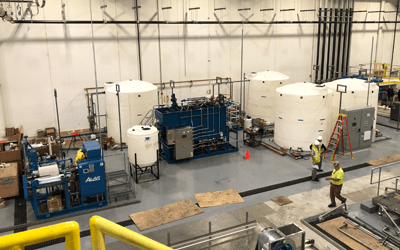
- Input water quality (conductivity < 10 micro Siemens)
- Average input flow (30 GPM)
- Required washer input pressure
- The need for a “fast fill” mode to quickly refill the washer after maintenance activities
- The requirement for maximal equipment up time
With customer input, Anguil selected a dual train Reverse Osmosis (RO) system to meet the washer’s influent requirements.
On the wastewater side, where the exact water chemistry was unknown, Anguil again worked with the can manufacturer to determine an expected range of water contaminants to select candidate treatment technologies which could handle the variable chemistry. Expecting a pH of 2-5, high TSS loading, significant amounts of sulfuric and hydrofluoric acids, oils and greases as well as possible surfactants, Anguil proposed a form of enhanced clarification called Ballasted Flocculation (BF). With a BF system, the pH could be adjusted as needed, fluoride and other metals precipitated, and oils broken out of suspension chemically using caustic addition, coagulants and polymers. With the addition of sand to flocculated species, the settling rate increases dramatically, leading to a smaller overall equipment footprint, important since this wastewater treatment system was to be housed inside the production facility. Extra space was left in the system design to allow the addition of water polishing equipment if after start-up, it was deemed necessary.
Because Anguil is an air and water treatment supplier, Anguil was able to evaluate solutions for both treatment needs, ultimately proposing a solution that did not require air pollution control equipment. Again, this fits into Anguil being a technology agnostic solution provider always on the look-out for the customer’s bottom line.
PUTTING IT ALL TOGETHER
After determining the flow and treatment requirements for the Process Water Conditioning System (PWCS) and the Wastewater Treatment System (WWTS), Anguil proceeded to determine the required logistics equipment and controls to operate both systems in automatic mode with the least operator involvement possible.
For example, inlet water buffer and RO permeate storage tanks were selected to supply some onsite storage, ensuring back-up capacity should the city water supply fail and to provide constant, even flow to the varying washer demands. Non-metallic AODD pumps were selected to lift and convey the high solids content and corrosive waste water to the treatment system. An equalization tank and an emergency dump tank were included to buffer flow through the WWTS while providing emergency capacity if the washer needed to be dumped for maintenance reasons, and to collect additional waste water sources from sludge dewatering and secondary containment floor sumps.
In addition to the mechanical components of both the PWCS and WWTS, Anguil’s control engineers worked to integrate both the larger sub-systems (RO, ballasted floc, Rotary Vacuum Drum) into the treatment plant. More importantly, they also worked directly with the canning equipment manufacturer to seamlessly integrate the disparate washer/water treatment systems to minimize production downtime and product loss in the event of failures with the PWCS, washer system or the WWTS.
GETTING THE SYSTEM UP AND RUNNING
After obtaining customer approval of the system design, Anguil ordered the long lead-time items, namely the tanks and large third-party vendor skids. Once these items were on order, Anguil coordinated the purchase and delivery of all the parts (pumps, valves, instrumentation, etc) to be shipped loose for field installation or to be assembled on Anguil pump skids.
Since the canning equipment manufacturer had already obtained the services of installation contractors, Anguil was not engaged for a turn-key installation. However, based on our installation experience with similar systems, Anguil received, labeled each part with its PID drawing tag number, and then “kitted” all the parts into boxes to aid the installation process. For example, all the instruments, valves and piping fittings associated with a given storage tank or sub-assembly were placed in their own box. Kitting parts in this way acted as a quality control step, ensuring the correct parts and amounts were delivered, and greatly assisted the install crew as they knew exactly where and how many parts to install on each tank.
Even though Anguil was not asked to perform installation work, Anguil was hired to provide an install supervisor to interface with contractors, provide guidance where necessary, troubleshoot issues, expedite defective part replacement, communicate the project schedule and handle changing project requirements. One direct benefit of Anguil’s install supervision was the ability to respond rapidly to changing site conditions and requirements. For example, prior to processing cans, the washer system required a “passivation” step consisting of treating the washer interior with caustic and acidic waters. This requirement was not originally intended to be included in Anguil’s scope in any way. However, to assist the customer, Anguil reorganized the installation effort to enable the RO system to be run in manual mode to feed the washer and the wastewater treatment system to be run in manual mode to allow discharge and pH neutralization of the passivation water.
Special site supervision and controls workarounds were required since the equipment had not been fully commissioned and installed at the time passivation was to occur. However, Anguil’s ability to accommodate the project needs saved the customer $100,000s in disposal and transport costs of the passivation water. After can making equipment was brought online, Anguil brought in their commissioning crew to ensure that the control program was operating correctly – especially with communications between the PWCS, WWTS and washer system. This included confirming that chemical protocol was validated and optimized and ensuring that any issues discovered during the initial start-up and shake-down were addressed quickly and efficiently. Ultimately, after training the site personnel on the system operation, troubleshooting of general issues and becoming familiar with system operation, both the PWCS and WWTS were able to support the washer’s input and waste water needs with minimal operator involvement and get the packager back to what they do best—making cans.
The Result
- Anguil was able to walk the customer through a collaborative treatment technology selection process resulting in systems (waste and process) that the customer was comfortable with and had high confidence would meet the desired treatment efficacy.
- Anguil’s approach of sticking to our core competency of engineering and integration led to the selection of technologies and vendors which resulted in a successful water treatment system.
- Anguil’s single source approach enabled streamlined communication when problems arouse. Instead of the customer calling multiple vendors, trying to figure out who owned the problem, they would call Anguil and Anguil led the charge as necessary. One call did it all.
- Anguil’s ability to provide both air and water treatment solutions allowed our engineering experts to explore all possible solutions and design the best fit treatment train — which ultimately removed the need for air pollution control—and lowered the total cost of ownership of the treatment system.
- Even though the customer had already contracted with installation contractors for this project, Anguil’s experience with turn-key installations made it apparent that the logistics of kitting equipment was necessary to ensure project success—all conducted within the original contract price.
- Because of the amount of pre-work done scoping the customer’s needs for both the PWCS and WWTS, no change orders were issued to complete the work—except for those items requested by the customer at a later date.
- Anguil’s customer-focused philosophy enabled us to maintain a flexible schedule to accommodate rapidly changing site demands without significant added costs to the customer.
Industrial Wastewater Treatment
Comments Off on Industrial Wastewater TreatmentThe Challenge
Anguil Environmental Systems was asked to supply an oxidizer and packed tower air stripper to treat a 65 gallon per minute water stream containing significant concentrations of Diesel Range Organics (DRO), Volatile Organic Compounds (VOCs) and Total Suspended Solids (TSS). The customer was sending the wastewater stream through a cooling tower which was continually fouling from the DRO present in the water. Significant maintenance costs and production downtime were incurred every time the tower was being brought out of service for cleaning. In addition, the customer was trying to achieve zero VOC emissions from their facility.
The Solution
Application engineers at Anguil determined that a Regenerative Thermal Oxidizer (RTO) would meet the customer’s needs but were skeptical that the air stripper would function properly given the customer supplied water characteristics. Anguil was engaged to evaluate the water stream for the air stripping application. Review of the supplied water analysis indicated that concentrations of the heavier Diesel Range Organics (naphthalene and higher) were beyond their solubility limits. Hence, the presence of free product in this water stream would quickly cause any air stripper to foul, detrimentally impacting stripping performance and potentially creating a safety hazard. Anguil recommended that the customer evaluate oil/water separation and emulsion breaking to remove and potentially recover the free product prior to entering the air stripper.
The Result
Using water samples obtained from the customer, an initial bench evaluation of oil/water separation was conducted. Upon receiving the samples, Anguil realized that either the customer-supplied water analysis was incorrect or that the water samples received were not representative of the customer’s process water since the presence of free product was not observed. The emulsion breaking tests were performed anyway, predictably meeting with little success. In addition to the emulsion breaking tests, Anguil attempted to coagulate the water to determine if this approach would be suitable, determining this method had merit.
Based on results from the initial separation study, Anguil recommended two courses of action. First, the customer would redo their analytical water analysis using suggested test methods to improve confidence in the treatment design requirements. Based on the results of the second round of analytical tests, Anguil suggested that a two stage pilot study be conducted. For Stage 1, Anguil representatives would perform treatability studies on site via jar testing. Based on the results obtained from Stage 1, Anguil engineers would perform a full scale, onsite pilot with the appropriate equipment for Stage 2.
Stage 1: Anguil representatives traveled to the site and performed jar tests directly with the process water in question. Since the process water was at a temperature of 110-120 oF, it was advantageous to work with the process directly rather than trying to ship samples off site possibly compromising their integrity from cooling, biological action or chemical reactions from long hold times. After a number of trials, they successfully determined that the water could be coagulated by raising the pH from 4 to 8.5, utilizing a poly aluminum chloride (PAC) based coagulant blend and a standard polymer. After coagulation and filtration, color, turbidity and solids content were reduced. Anguil then sent the untreated and treated water for third part lab analysis to determine the overall effectiveness of the process. The results were promising and the customer elected to move forward with Stage 2 of the pilot study.
Stage 2: Based on the site constraints and treatment goals, Anguil modified its pilot clarification system to perform the second stage of the study. Equipment arrived onsite,was unloaded and placed within the facility. A generator was rented since the facility could not easily supply the required power. Anguil then proceeded to unpack and plumb the pilot system into the existing process piping.
Once everything was set-up, pumps primed and running, the operator filled the tank with process water and began processing using the chemical formula determined in Stage 1: Raise pH > 8.5 using 50% caustic solution, add 300 ppm coagulant, add 1 ppm polymer. As expected, the clarifier influent demonstrated a good floc which quickly began to settle to the bottom of the clarification tank. With continued processing, clarity improvements in the clarification tank became noticeable as submerged parts of the tank became visible as the initial dirty water was displaced by the coagulated and clarified water. Water samples pulled from the clarifier effluent were obviously cleaner than the raw process water, and with continued processing acceptable clarity was achieved.
After successfully demonstrating the clarification process, treated samples were pulled and tested using the same test protocol used in Stage 1. In addition, a sludge sample was sent for benzene analysis in order to determine if the sludge would be considered hazardous. Sludge production rates were quantified by coagulating, flocculating and filtering specific volumes of process water. Filtered samples were wrung dry and air dried for several days. Wet and dried samples were weighed.
The qualitative and quantitative results met the customer’s expectations and treatment goals. The chemical coagulation protocol and clarifier in this pilot work were able achieve a DRO reduction of 85% or greater and an 80% reduction in TSS. Since Anguil was proposing a ballasted floc system for the final treatment system to handle the design flow rate of 65 GPM, another set of samples was taken for ballasted floc testing which achieved similar DRO removal rates but improved on the TSS reduction to less than 1 NTU. After reviewing the sludge production rates and potential hazardous classification for the sludge, the customer asked Anguil to recommend a sludge dewatering system. Further, after reviewing the treatment system capabilities and facility requirements, Anguil recommended removing the air stripper and oxidizer from the scope of supply as it was determined that removing the heaviest organics would solve the facilities heat exchanger fouling problems, and the limited VOC loading did not justify the use of an oxidizer.
Anguil was able to guide the customer through the equipment design and selection process by identifying and rectifying shortcomings in the analytical data, avoiding time and cost specifying and designing equipment which would not address the customer’s project goals. Ultimately, the main benefit of Anguil was determining a solution which did meet the customer’s objectives despite the fact that the selected solution differed greatly from the original request. Onsite jar and pilot tests allowed the customer to become educated and familiar with the treatment process while understanding the benefits, capabilities and trade-offs of the proposed system. Further, being on site allowed Anguil to really understand the customer’s needs and process, allowing them to identify customer process variables which could potentially affect treatment system performance and provide seamless integration of the new treatment system into the existing process.
Superfund Site, Water Pump & Treat
Comments Off on Superfund Site, Water Pump & TreatThe Challenge
Anguil was contracted as part of a team of companies to implement a groundwater pump and treat system intended to remove trichloroethylene (TCE) from a local aquifer designated as a Superfund Site by the Environmental Protection Agency (EPA). Though the site is nestled between the buildings and roadways of 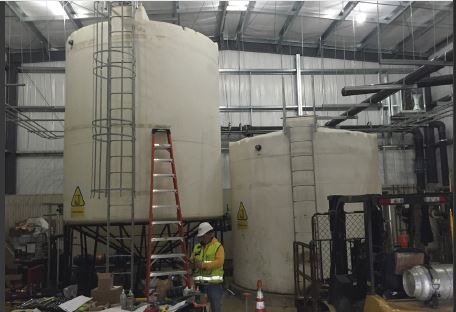
The 500 gallon per minute (GPM) pump and treat system, as well as the overall site plan, were designed by a large engineering, procurement and construction (EPC) firm working on behalf of the responsible party. A general contractor and dedicated installation sub-contractor were selected to prepare the site, drill the extraction and injection wells, install the underground conveyance piping, erect the prefabricated treatment building, install the treatment equipment and perform all the interconnecting piping.
The Solution
Anguil was contracted for two phases of this project. During the design and approval portion, Anguil’s Electrical Engineering and Controls team was asked to review the electrical design and system controls. In addition, Anguil EEs also provided and reviewed the system controls specifications to facilitate approvals from the EPA and Army Corps of Engineers. For the construction phase, Anguil provided and managed the delivery of all the water treatment and water logistics equipment, including the control system and control panels. Furthermore, during the construction phase, Anguil field service engineers provided installation and shakedown assistance for the entire system.
Anguil’s scope of supply included all valves, process instruments and transmitters, water treatment equipment, the exhaust stack, storage tanks, pumps, chemical injection system, motor control system, main building control panel as well as two remotely located panels at the extraction and injection well sites. Further, to the largest extent possible, Anguil was directed to supply the equipment skid mounted, pre-plumbed and prewired.
The Result
Anguil was able to bring additional value to this project by successfully managing the multiple vendors of both the water treatment and controls equipment for the EPC. In particular, Anguil identified low-cost, expedited options to meet the aggressive construction schedule mandated by the EPA penalty deadlines, in some cases cutting long lead times in half. Having a custom solutions integrator on this project was especially valuable when major, unforeseen factory delays occurred. By effectively communicating with the construction team, schedules and resources were adequately adjusted. Further, Anguil was able to manage discrepancies between the selected vendor’s products and customer specifications, achieving the design specifications without sacrificing performance.
Throughout the project, Anguil provided onsite engineering assistance suggesting inexpensive changes, such as relocation of instrumentation or alternate piping plans to the equipment, which improved operations and maintenance activities. From an engineering standpoint, they were able to recommend improvements to customer specifications based on operational experience. These improvements included recommendations to upgrade materials of construction, alterations to process instrumentation, upgrading the size of the control panel touch screen to effectively display control parameters, and addition of important safety features. Furthermore, elimination of the redundant multiple control panels was accomplished by integration of logic into the Anguil supplied main system control panel. Lastly, because of site considerations, Anguil suggested substitution of the originally specified radio communications between the main control panel and remote injection well control panel with fiber optic connectivity. This ultimately resulted in a reduction of Anguil’s scope of supply, but greatly improved the system robustness and reliability.
As the project progressed, Anguil worked with the EPC engineering team on several customer-driven change orders. Most significantly, they worked with the EPC to specify and source additional flow meters for the injection well piping that were capable of accurate operation within the space constraints (limited straight run) dictated by the prefabricated concrete well vaults. Anguil managed ripple effect design changes including upgrading the effluent pump capacity, the motor control center and additional input/output cards for the local control panel – these changes were accomplished with no effect on the overall equipment delivery schedule.
In preparation of system start-up and shake down, Anguil on site personnel verified that all equipment was installed per manufacturer recommendations and was operating correctly. In several instances, they were able to identify equipment which had been installed improperly, delivered incorrectly or specified imprecisely. In most cases, these discrepancies were rectified quickly at no cost to the customer. As Anguil personnel accommodated continuing construction activities, PLC program operation was verified and altered as necessary to provide adequate system control. The final result was a turnkey system that met customer requirements for their commissioning schedule and operational characteristics so the project could start on time and on budget.
Mobile Remediation System
Comments Off on Mobile Remediation System The Challenge
The Challenge
A large consulting and contracting firm owns and operates several ex-situ Thermal Desorption Units (TDUs). Each single-load unit has the capacity to desorb 15 tons of soil per hour at a temperature of 400°F – 900°F (204°C – 482°C). These TDUs have been designed to operate on both chlorinated and non-chlorinated contaminants. They are also approved for use under the Resource Conservation and Recovery Act (RCRA) and Comprehensive Environmental Response, Compensation and Liability Act (CERCLA) as well as private industry sites. Since each TDU has the flexibility to operate on standard hydrocarbon and halogenated hydrocarbon applications, the selected pollution control system has to share this flexibility. Due to varying environmental regulations throughout the country on Hydrogen Chloride (HCL), the selected pollution control system also had to eliminate any HCL generated by the oxidation of chlorinated compounds. Finally, the control systems portability was a crucial factor since this contractor’s profitability is based upon how quickly the system can be mobilized, operated and then demobilized for movement to the next site.
The Solution
The lack of inexpensive natural gas feeds at many of these sites dictated the use of propane as a fuel source for the oxidation technology. Because thermal oxidation requires operating temperatures between 1600°F – 2000°F (871.1°C – 1093.3°C) , the customer was concerned that this technology would lead to unacceptable fuel and operating costs. After examining various capital equipment options and the corresponding operational costs, the consulting engineer recognized the benefits of a catalytic oxidizer which operates at much lower combustion temperatures. After a thorough technical evaluation and bid process, Global Technologies was selected to solve their VOC problem by providing a mobile treatment package, complete with a Chlorinated Catalytic Oxidizer (Chloro-Cat TM) and HCL scrubber package.
The Result
Global’s experience with chlorinated catalytic oxidation and HCL treatment prior to the initiation of this project was extensive. At this point, Global had installed over 30 such systems to treat chlorinated streams from Soil Vapor Extraction (SVE) and airstripper sites. This experience proved invaluable in designing and implementing the proper solution. Each rotary kiln or TDU could be expected to exhaust up to 5,000 SCFM (8,025 Nm3/hr) of desorption air at a temperature between 400°F – 900°F (204°C – 482°C) and a chlorinated VOC concentration of 3,000 ppmv. Utilization of a high-temperature baghouse dust collector on the TDU skid removed concerns associated with dust or dirt plugging of the monolithic catalyst cells.
Global utilized an induced draft FRP fan on the back end of the treatment package due to the high temperature, highly saturated exhaust from the TDU. As with all Global chlorinated catalytic systems, a 316L stainless steel shell and tube heat exchanger was installed in the 316L stainless steel reactor. The chlorinated catalytic system was designed to provide 99% destruction efficiency at a temperature of 500°F – 850°F (260°C – 454°C) to reduce auxiliary fuel usage. Safety systems were installed to ensure no HCL condensation or system corrosion.
The 50′ drop deck trailer, upon which the chlorinated system was mounted, also incorporated a Liquid Propane Vaporizer, a storage area for equipment transport, and an HCL Scrubber capable of 99.9% HCL removal in both caustic and pure water mode.
The most recent compliance testing of this turnkey package demonstrated over 99% destruction of all compounds. The result is another satisfied Anguil client.
Chlorinated Groundwater Treatment
Comments Off on Chlorinated Groundwater Treatment The Challenge
The Challenge
A Fortune 50 company implemented a remediation system to collect and treat polluted groundwater from a site in Central New York and prevent impacted groundwater from flowing into local waterways. An engineering and construction firm (EPC) was hired to design and build an effective, efficient groundwater treatment system. Primary treatment of the polluted water was to be accomplished using air strippers and the effluent then sent to a separate offsite facility for final treatment. The VOCs liberated from the groundwater by the air strippers, including benzene, chlorobenzene and dichlorobenzene, require treatment before being released to the atmosphere.
The design-builder required an air pollution control system which could destroy 99% of the VOCs and safely remove any of the resultant inorganic acid gasses that would be formed. As this was a long-term project, the VOC control system needed to be highly reliable and provide low operational costs.
The Solution
After a thorough evaluation, the design-build consultant selected Anguil to provide the VOC treatment solution. Anguil’s extensive engineering support, industry-leading reliability, and history of solving difficult halogenated destruction problems around the world made them the obvious choice. Anguil engineers recommended a Model 50 Regenerative Thermal Oxidizer (RTO) with an Acid Gas Scrubber. The system is capable of processing up to 5,000 SCFM (8,025 Nm3/hr) of VOC-laden air while providing 99% VOC destruction efficiency and 99% removal by weight of Hydrochloric Acid.
The Result
Anguil’s engineering resources and experience processing halogenated contaminants were crucial to this project. In the Anguil two chamber RTO, polluted air is preheated as it passes over ceramic media beds located in the energy recovery chamber. From there, the process air moves into the combustion chamber where the Volatile Organic Compounds (VOC) are oxidized. Heat from the hot air stream is then recovered by the second ceramic media bed before being exhausted to the acid gas scrubber. A flow diverter poppet valve switches the airflow direction so both energy recovery beds are fully utilized, thereby reducing the auxiliary fuel requirement as much as possible. Anguil’s two chamber RTO is designed to achieve a heat recovery of 95% TER and results in significantly lower operating costs than other thermal oxidation technologies.
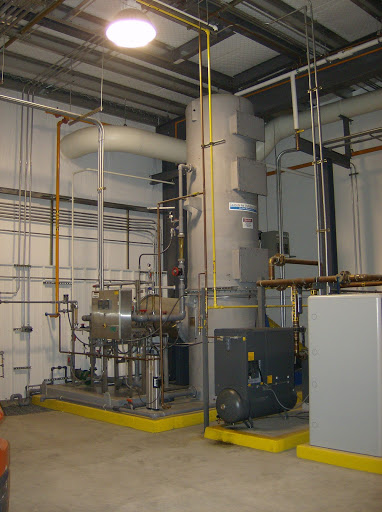
The specified vapor treatment system included several design features that ensure safe and effective operation in the expected environment. First, an induced draft arrangement was utilized where the process fan is located downstream of the scrubber. An induced draft arrangement is preferred for halogenated applications because it creates a negative air pressure through the entire system where acid gasses are present, minimizing the potential leaking of corrosive gasses which can be forced out of a system under positive pressure. Leakage of s corrosive acid vapors produced by the RTO from the oxidation of halogenated hydrocarbons from equipment connections and penetrations y can corrode the outer shell of the equipment and surrounding environment, as well as posing human health and safety concerns.
Special consideration was given to the materials of construction to ensure performance and reliability in the corrosive environment. Upgraded materials of construction selected for key areas of the RTO are field-proven from Anguil’s many halogenated installations. For example, RTO outer reactor shells were constructed of carbon steel but internally coated with a specialty coating to resist hydrochloric acid corrosion from the inside out. Poppet valves were fabricated from a high nickel alloy, while transitions from the RTO outlet plenum and the acid gas scrubber quench were constructed of hastelloy. The scrubber tower, sump and stack were all fabricated out of FRP (Fiberglass Reinforced Plastic).
Equipment location at the facility was carefully selected to reduce installation costs and minimize equipment downtime. The scrubber was installed inside the treatment building, eliminating the concern of freezing during cold months and costs associated with winterization. The oxidizer was placed outdoors adjacent to the treatment building and near the scrubber system to eliminate extensive ductwork runs.
Anguil’s understanding of the customer’s unique requirements and engineering knowledge of the detailed process conditions resulted in an efficient and reliable system and ultimately another satisfied Anguil customer.



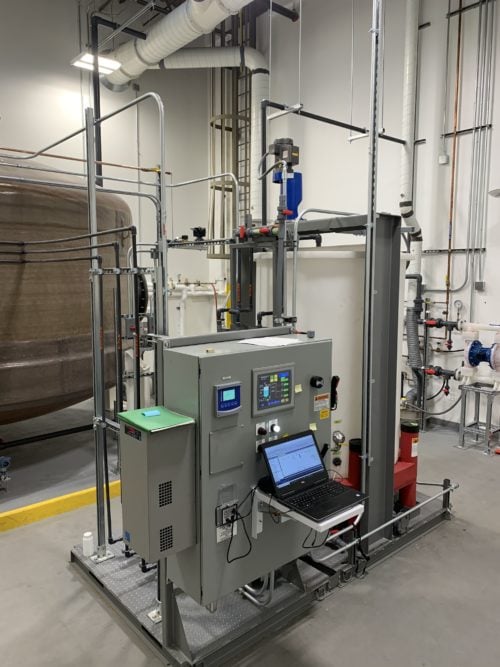
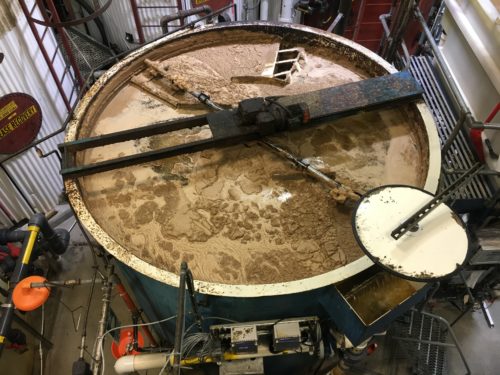
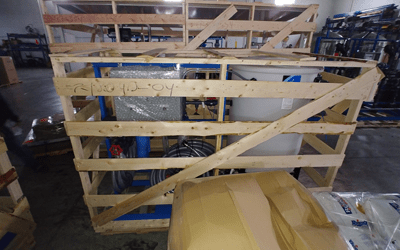
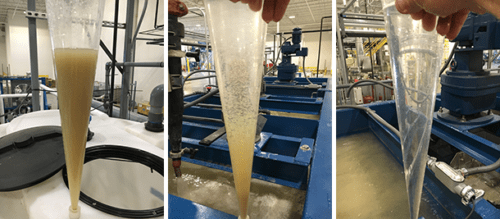
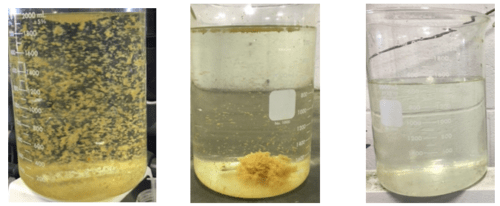

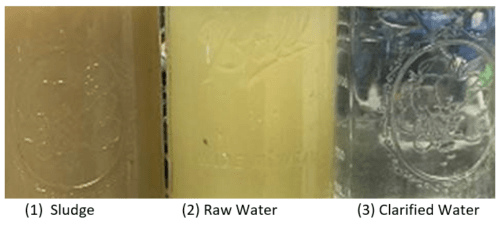
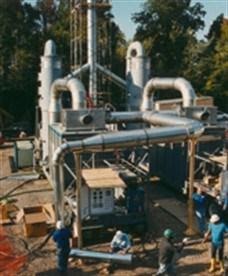 The Challenge
The Challenge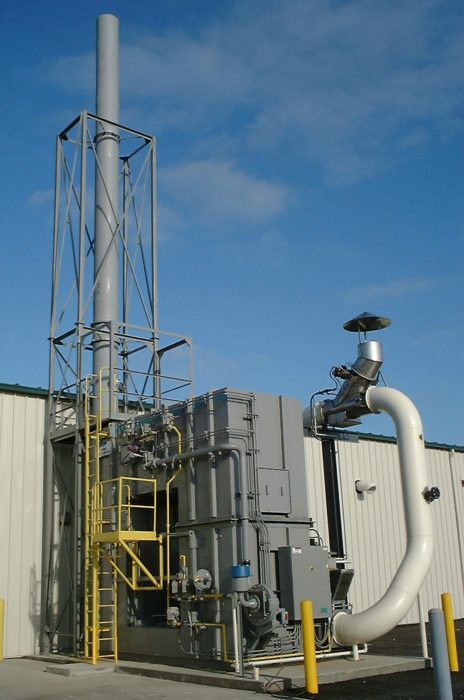 The Challenge
The Challenge